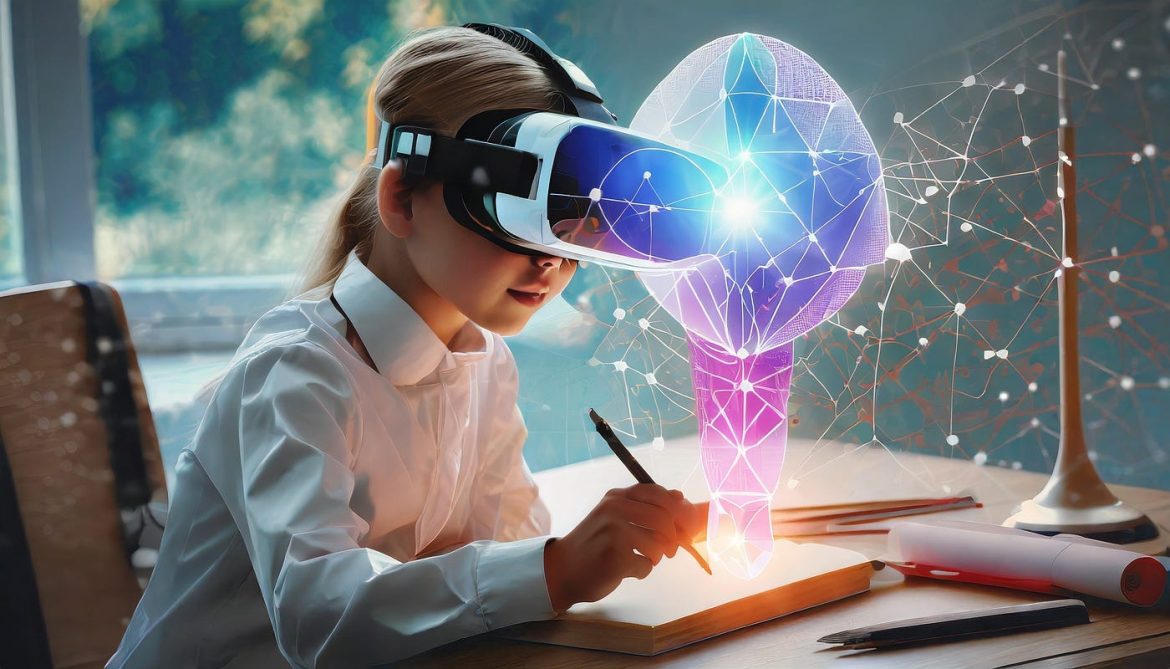Augmented Reality (AR) has emerged as a transformative technology with the potential to revolutionize various industries, including education. By overlaying digital content onto the real world, AR enhances learning experiences, engages students, and fosters deeper understanding and retention of educational material. In this article, we explore the applications of AR in education and its impact on teaching and learning.
Understanding Augmented Reality
Augmented Reality (AR) is a technology that superimposes digital content, such as images, videos, or 3D models, onto the user’s view of the real world. Unlike Virtual Reality (VR), which immerses users in a completely virtual environment, AR enhances the real world by adding virtual elements that interact with the physical environment. AR applications typically run on mobile devices or wearable devices equipped with cameras and sensors, allowing users to interact with virtual content in real-time.
Applications of AR in Education
Enhanced Visualization
One of the primary benefits of AR in education is its ability to enhance visualization of complex concepts. By overlaying 3D models, simulations, and interactive diagrams onto physical objects or environments, AR enables students to visualize abstract concepts in a tangible and interactive way. For example, students studying anatomy can use AR apps to explore 3D models of the human body and interact with different organs, tissues, and systems, facilitating a deeper understanding of anatomy and physiology.
Interactive Learning Experiences
AR transforms passive learning experiences into interactive and immersive activities. Through AR-enabled educational apps, students can engage with digital content in real-time, solve problems, and participate in virtual experiments and simulations. For instance, in science classes, students can use AR to simulate chemical reactions, explore the solar system, or dissect virtual specimens, providing hands-on learning experiences without the need for physical materials or equipment.
Personalized Education
AR technology enables personalized learning experiences tailored to individual students’ needs and preferences. By tracking students’ progress and performance in real-time, AR apps can adapt content and learning activities to match their skill level, learning pace, and interests. This personalized approach not only increases student engagement but also helps address the diverse learning needs of students with different abilities and learning styles, promoting inclusive education.
Impact on Teaching and Learning
Increased Engagement and Motivation
AR has been shown to increase student engagement and motivation by making learning more interactive, immersive, and fun. The interactive nature of AR experiences captures students’ attention and encourages active participation in the learning process. Additionally, the novelty factor of AR technology sparks curiosity and excitement among students, motivating them to explore and learn new concepts.
Improved Retention and Understanding
Studies have demonstrated that AR can improve retention and understanding of educational material by providing multi-sensory learning experiences. By engaging multiple senses, such as sight, sound, and touch, AR stimulates cognitive processing and enhances memory retention. Moreover, the ability to interact with virtual content in a spatial context helps reinforce conceptual understanding and spatial reasoning skills, leading to deeper learning outcomes.
Facilitated Collaborative Learning
AR fosters collaborative learning environments where students can work together on projects, share ideas, and solve problems collectively. Through collaborative AR experiences, students can collaborate in real-time, share virtual objects and annotations, and communicate effectively with peers and instructors. This collaborative approach promotes teamwork, communication skills, and critical thinking, preparing students for success in a collaborative and interconnected world.
Future Trends and Challenges
As AR continues to evolve, several trends and challenges are shaping its future in education. One trend is the integration of AR with other emerging technologies, such as Artificial Intelligence (AI) and Internet of Things (IoT), to create more immersive and intelligent learning experiences. However, challenges such as access to AR-enabled devices, digital literacy, and privacy concerns need to be addressed to ensure equitable access and responsible use of AR technology in education.
In conclusion, Augmented Reality (AR) has the potential to transform learning experiences by enhancing visualization, promoting interactive learning, and personalizing education. By leveraging AR technology, educators can create engaging, immersive, and personalized learning environments that cater to the diverse needs and preferences of students. As AR continues to evolve, it holds promise as a powerful tool for advancing education and preparing students for success in the digital age.
